Photographer Ales Bravnicar’s Sixth Sense! “I see Beautiful Pictures.”
Images used with permission from its copyright holder.
Wayda brings in 2 gatefolds, Bravnicar 6 PB pictorials worldwide.
Shoot The Centerfold and Playboy master photographer Steve Wayda scores in the latest July/Aug 2012 issue of Playboy with stunning Playmate pictorials of Shelby Chesnes and Beth Williams. Also featured in the summer double-issue is STC’s very own newest wunder instructor Ales Bravnicar, who scores big-time with his Miami pictorial of Slovenian top model and Prada fitness model Nina Kohne in the very same issue. What really makes this dual month a mega-publishing month is that Ales’s pictorial of Nina has also been published in SIX Playboy Editions worldwide concurrently. Now that’s what we call a successful pictorial on steroids!
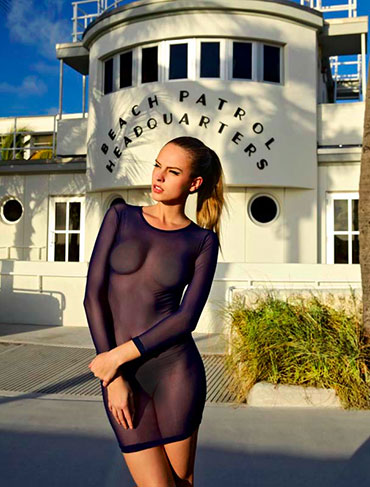 STC members may recall Ales did a shoot with Nina while appearing as a guest speaker at the January seminar workshop. A Playboy veteran, Ales has been a senior contributor to Playboy Slovenia for 12 years and has had his pictures published in almost all international editions worldwide. Not only can you see this stunning pictorial in the US edition of Playboy on newsstands right now, it can also be found in the pages of international editions in Croatia, Czech Republic, Greece, Bulgaria, Slovenia and more on the way. As the fast-paced photography business changes, it also becomes more important than ever been before to keep pace with new technologies and publishing practices. As a world traveler who has seen many tech trends come and go, Ales has learned how to utilize these new technologies to his advantage.
STC members may recall Ales did a shoot with Nina while appearing as a guest speaker at the January seminar workshop. A Playboy veteran, Ales has been a senior contributor to Playboy Slovenia for 12 years and has had his pictures published in almost all international editions worldwide. Not only can you see this stunning pictorial in the US edition of Playboy on newsstands right now, it can also be found in the pages of international editions in Croatia, Czech Republic, Greece, Bulgaria, Slovenia and more on the way. As the fast-paced photography business changes, it also becomes more important than ever been before to keep pace with new technologies and publishing practices. As a world traveler who has seen many tech trends come and go, Ales has learned how to utilize these new technologies to his advantage.
At the next Shoot The Centerfold seminar/workshop in October, Ales will be bringing along his secrets and experiences of how to get published not only in the US, put also internationally. “It is very important to be able to travel not only across the distances, but also on par with the technology that speeds faster than the speed of light year after year,” says Ales. “As much as we admire and learn from the past – it is the backbone for many of us – it is absolutely important to look towards the future and follow its steep path forward. The knowledge we share at the Shoot The Centerfold seminar workshop will help you get there. I wish there would have been a seminar like this when I was studying photography… we had to learn everything the hard way!”
Interview:
 STC: Ales, congratulations on your pictorial in Playboy US and multiple international Playboy editions! You actually photographed beautiful Nina during our seminar in Miami where you appeared as a guest speaker recently. Tell us, how did you manage to be at the seminar and complete the pictorial at the same time?
STC: Ales, congratulations on your pictorial in Playboy US and multiple international Playboy editions! You actually photographed beautiful Nina during our seminar in Miami where you appeared as a guest speaker recently. Tell us, how did you manage to be at the seminar and complete the pictorial at the same time?
Thank you very much for your kind words. I was thrilled when Playboy US contacted me and asked for the photos I shot in Miami to be published in their summer double edition. It hit the newsstands yesterday – about the same time as the Greek, Bulgarian and Czech editions. They all featured Nina’s pictures and it is really fun to see how every edition chose different ones for their pictorials. Diversity is a must when you are shooting for Playboy. You always have to give the editors enough material from which to choose.
I always try to combine business and pleasure when travelling. I was heading to Miami in January with two goals in mind; being invited as a guest speaker to the STC seminar (pleasure part), and shooting a Caribbean-style pictorial in Florida (business part). We brought the lovely model Nina Kohne with us and photographed her in and around Miami. I introduced her to the STC crew and she even partied with Kyra Milan and Rainy Day Jordan right after the workshop. Our shoot was organized months in advance. Getting the production gear going and contacting the right people is crucial. Nothing is left to chance. Every single detail is planned and organized from home.
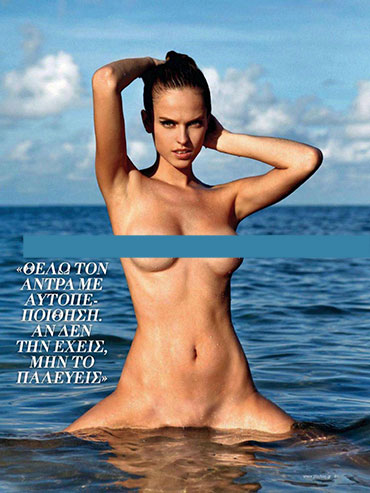 STC: Wow, that’s a lots of planning and juggling things around. How did your model Nina react to all the hectic scheduling? She seems to be a very popular fashion model and not a girl-next-door that normally appears in Playboy US.
STC: Wow, that’s a lots of planning and juggling things around. How did your model Nina react to all the hectic scheduling? She seems to be a very popular fashion model and not a girl-next-door that normally appears in Playboy US.
Nina is a pleasure to work with. She is one of those girls you would take to the end of the world with you; professional, kind and really, really easygoing. She knew she had to be ready for shooting every morning and we paused only when I was at the studios during the STC workshop or when some thick clouds covered the Florida skies. She put her down time to good use by hitting the malls.
Nina is extremely popular back home. She is the kind of girl that is aware of her sexy attributes and does nothing to hide it. We shot her for the page-three “dream girl” celebrity pages in Playboy in 2010 and since then she has been a constant feature in my fashion editorials. Just after the Miami shoot, she moved to Milan where she is nowadays buried up to her neck with work. She became a fit girl for Prada just days after arriving in Italy’s capital of fashion. That’s what I call a huge success.
STC: You like to travel a lot and your portfolio is as colorful as a 1,000 rainbows. You also went to Africa with Jarmo for some pictorials that you both created. Tell us a little more about your travels in detail and how one can travel and learn from you.
 I got bitten by the travel bug in 2000 and since then I have visited more than 90 countries around the globe, which is almost half of the world. Three years ago, I managed to put up a project shooting beautiful nude top models around the world and since then, we have had international pictorials shot in amazing locations such as Egypt, Brazil, Turkey, California, Canary Islands, France and Bali published in almost every Playboy edition worldwide. Our latest trip was to Namibia, where Jarmo and I shot three beautiful girls for some upcoming features. The trip was so much fun that we are seriously considering expanding the STC education program to feature yearly international workshops in exotic locations. There is a whole new world out there outside the dark studios where you have to work quickly and make no mistakes. Photographic knowledge really becomes important when shooting in a foreign, unfamiliar location.
I got bitten by the travel bug in 2000 and since then I have visited more than 90 countries around the globe, which is almost half of the world. Three years ago, I managed to put up a project shooting beautiful nude top models around the world and since then, we have had international pictorials shot in amazing locations such as Egypt, Brazil, Turkey, California, Canary Islands, France and Bali published in almost every Playboy edition worldwide. Our latest trip was to Namibia, where Jarmo and I shot three beautiful girls for some upcoming features. The trip was so much fun that we are seriously considering expanding the STC education program to feature yearly international workshops in exotic locations. There is a whole new world out there outside the dark studios where you have to work quickly and make no mistakes. Photographic knowledge really becomes important when shooting in a foreign, unfamiliar location.
When I shoot I try to match the situation to a specific idea, but if the subject is too stiff, it usually doesn’t work. The best photos are made with people who trust the photographer entirely. Roland Barthes once said, “You can not put someone in focus if they are out of focus themselves.” That says a lot.
STC: Do you feel the photography industry, given the digital revolution and low economy, has changed enough so that smaller budget productions can pull a chair up to the table and compete?
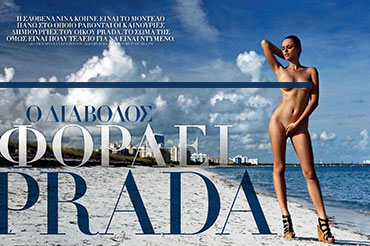 The photography industry is a mere shadow of its former glory. The days of photographers earning top dollars has mostly ended and many got thrown off their high-horses and thrones they have been occupying for decades.
The photography industry is a mere shadow of its former glory. The days of photographers earning top dollars has mostly ended and many got thrown off their high-horses and thrones they have been occupying for decades.
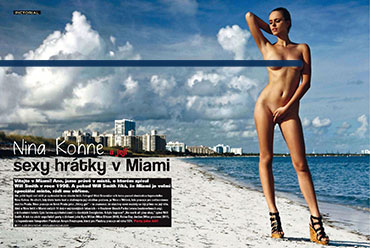 The democratization of photography as a media meant equipment has become accessible to all and digital files are now a dime-a-dozen commodity. Take Getty Images – from a mere million photos licensed nearly 10 years ago, that figure rose to
The democratization of photography as a media meant equipment has become accessible to all and digital files are now a dime-a-dozen commodity. Take Getty Images – from a mere million photos licensed nearly 10 years ago, that figure rose to 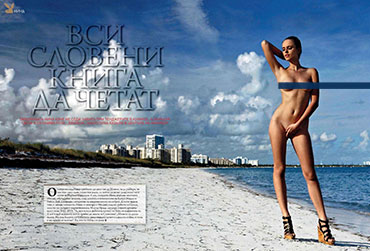 almost 30 million last year, the majority of which were submitted by amateur photographers.
almost 30 million last year, the majority of which were submitted by amateur photographers.
To paraphrase The New York Times, the concept of photography has gone downhill for professionals, but not because of the growing competition. It has collapsed mostly because amateurs are largely happy to be paid anything for their photos, just for the sake of being published somewhere… or not even paid at all. Most of the ad agencies do not seem to care, ignoring the quality for the sake of profit.
STC: So, are you saying that photography has been like a Monopoly game until now with sheltered players?
Yes. A very closed, cruel, classic, capitalist Monopoly game.
STC: If you could go back 10 years in your life, what would you do differently as far as your career goes?
Well, for one I would have most probably moved out of Slovenia and scooped some larger markets while there were still huge productions going on everywhere. Don’t get me wrong, I love my home country with all of my heart, but as far as work goes, the market of two-million people just isn’t big enough. Luckily, in this digital age it does not matter where you live in order to be published worldwide and I will keep on sharing my time between my home on the sunny side of the Alps with the rest of the world.
STC: If there were no cameras in your life, what would it be?
 Who knows? I would probably be a painter or be drawing comic books. I drew a lot of comic books when I was little. I had this fictional character, Noel, and did his adventures in France. I also drew comics of all my classmates, Schulz-style. My family had a generation of artists; one composer, one pianist, one prima ballerina, and one painter. I love browsing through galleries and absorbing the beauty of art. I learned all about composition and lighting there. I remember the day we had four-hour stopover in Paris. I rushed to a cab, drove to the Louvre, ran all across the vast museum just to see the Da Vinci’s Mona Lisa and then ran back to the airport. It was worth it!
Who knows? I would probably be a painter or be drawing comic books. I drew a lot of comic books when I was little. I had this fictional character, Noel, and did his adventures in France. I also drew comics of all my classmates, Schulz-style. My family had a generation of artists; one composer, one pianist, one prima ballerina, and one painter. I love browsing through galleries and absorbing the beauty of art. I learned all about composition and lighting there. I remember the day we had four-hour stopover in Paris. I rushed to a cab, drove to the Louvre, ran all across the vast museum just to see the Da Vinci’s Mona Lisa and then ran back to the airport. It was worth it!
STC: Photographers in general are very close-minded when it comes down to sharing their knowledge. What is your opinion on that?
Sharing is power. The days of hiding in safe havens are long over. I see some photographers still desperately trying to hide their modus operandi, but that is really stupid, childish and soooo last century. Come on, nobody is going to make the exact same photograph as you, even if they know all the ropes, technical details and tricks of the trade. Each photographer is unique because we all put a piece of our soul in the pictures we create.
STC: Shoot The Centerfold also is all about sharing the wisdom and knowledge. When you first saw STC, what went through your mind?
I have known Jarmo for years and one day he just surprised me with an e-mail linking to the STC homepage, saying, “Look, this is what we do now.” I was extremely impressed with all the professionalism that went into creating this seminar and workshop, not only visually but also in regards to the wide knowledge base it offered. Today, after more than a year of successful wisdom-sharing I am extremely proud of being a part of it.
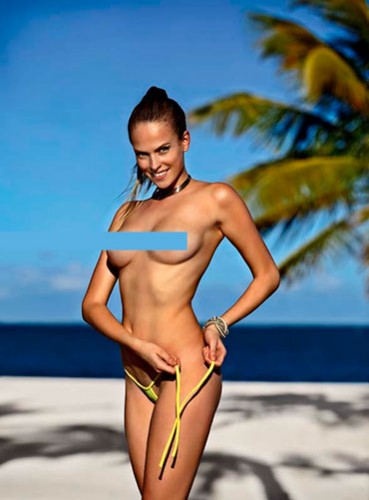 STC: You have photographed over 100 celebrities and there is a rumor that photographing celebrities can be a pain-in-the-rear experience. What’s your take on this one?
STC: You have photographed over 100 celebrities and there is a rumor that photographing celebrities can be a pain-in-the-rear experience. What’s your take on this one?
I have been shooting scantily clad Slovenian female celebrities, singers, models, actresses, athletes and socialites for our Playboy page-three “dream girl” every month for the past eight years. I must say that a majority of European celebrities do not bring their publicists to the shoot and that they are very down-to-earth. We have had very few nasty “ego-exploding” experiences, maybe only once or twice, but it comes with the job.
My shoots are always fun, we laugh all the time and in such a relaxed atmosphere, the robes indeed fall off more easily. Kathleen Rooney wrote about these experiences in her book “Live Nude Girl: My Life as an Object,” saying the average “embarrassment time” before the model is comfortable with being nude in front of the photographer lasts only about 30 seconds. It is one of the very few books from the perspective of a professional nude glamour model – read it if you have the chance.
STC: Jarmo tells us that you are a lens-hog and that you fall in love with gizmos quite easily. What is in your bag currently and is Santa going to bring new toys anytime soon?
My dad’s chrome Leica IIIc from 1938 sparked my interest in photography. It was such a beautiful pièce de résistance, a bright, shiny camera with an incredible history. I learned to load film in it – and believe me, with those old Leicas it was not easy – and started shooting away. I was 11 years old then.
 Later, I got involved in big projects, which we managed to pull off without Facebook support (there was none) and shooting only on film. I used medium format exclusively: Mamiya RZ, Pentax 67 and Hasselblad 553ELX. I owned no 35mm cameras at all. When I switched to digital in 2003, I found that Canon makes all those ultra wide-open lenses I so much desired but could not get due to limitations of working with medium format.
Later, I got involved in big projects, which we managed to pull off without Facebook support (there was none) and shooting only on film. I used medium format exclusively: Mamiya RZ, Pentax 67 and Hasselblad 553ELX. I owned no 35mm cameras at all. When I switched to digital in 2003, I found that Canon makes all those ultra wide-open lenses I so much desired but could not get due to limitations of working with medium format.
I soon became the Canon Ambassador for Slovenia and recently switched from 1Ds Mk III to 5D Mk III. I also use my Hasselblad H4D 50 extensively and sometimes I even pull out the ol’ chrome Leica for an odd shoot or two.
The truth about equipment is that it does not really matter what you’ve got as long as you are pleased with it and produce good photos. Some people read too many forums and listen to too many other people telling them what they absolutely need and cannot do without, ultimately ending up with A LOT of gear they will almost never use. They become gear hoarders.
My philosophy is simple; if you do not use it for a year, sell it. That’s good feng shui. Of course, I am still fascinated by all the new shiny stuff that hits the market as much as the next guy, but I will not become subdued by the constant bombardment about how obsolete my yesterday’s gear is unless I really feel I will need the specific features of a new item. A good example is the video feature of the latest DSLR’s. That was a must-switch for many photographers.
STC: Is videography diluting photography in your opinion, and how important is video for today’s photographer?
Distant Shores from Bravnicar on Vimeo.
Play video ⇪
Not at all. Video features of DSLRs and the low-cost production of amazing video cameras such as the Sony FS700 for just a fraction of previous movie camera prices are changing the industry as much as digital sensors changed the photo business. Some photographers are angry, saying let’s keep cameras for photography only, but I think video features on DSLRs are as big a revolution as Viagra. Video and photography must go hand-in-hand on their parallel path. I started to shoot videos over a year ago and absolutely fell in love with it!
STC: The market in Europe is somewhat different from the US market, which has recently been adopting more and more styles from across the pond. What is it that makes it so different and whom is looking at who?
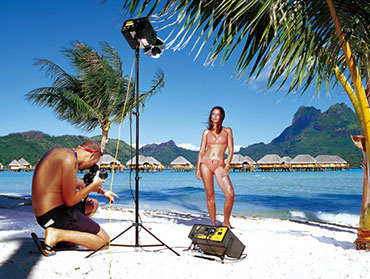 For one, Europe is much, much more tolerant towards nudity than America. You see nipples in nearly all the fashion editorials here. The leading style in this part of the world has always been putting the model against the sheer background and lighting it with just one beauty dish, something similar to Terry Richardson’s lighting style. A lot of magazines, especially those in the UK such as Front, Zoo and Nuts, use this technique quite extensively. This is the look some US magazines, Playboy included (just remember the Sasha Grey cover and the latest Jenny McCarthy one), are slowly and gradually adopting. On the other hand, I have always personally been fascinated with the “classic” looks of glamour lighting, the likes of Arny Freytag and Steve Wayda. I firmly believe doing everything right in the camera drastically helps getting better results in the end.
For one, Europe is much, much more tolerant towards nudity than America. You see nipples in nearly all the fashion editorials here. The leading style in this part of the world has always been putting the model against the sheer background and lighting it with just one beauty dish, something similar to Terry Richardson’s lighting style. A lot of magazines, especially those in the UK such as Front, Zoo and Nuts, use this technique quite extensively. This is the look some US magazines, Playboy included (just remember the Sasha Grey cover and the latest Jenny McCarthy one), are slowly and gradually adopting. On the other hand, I have always personally been fascinated with the “classic” looks of glamour lighting, the likes of Arny Freytag and Steve Wayda. I firmly believe doing everything right in the camera drastically helps getting better results in the end.
STC: Your latest Playmate pictorial is not your first rodeo and you seem to score them as if they were white ponies you are riding into the sunset. What’s the secret?
The key ingredient is dedication. It takes blood, sweat and tears to do it but the end results are always worth it. All the hard work and effort is immediately forgotten when you see your work finally published internationally. You must also add a big portion of knowledge to the recipe, a fair amount of professionalism and finish it off with a pinch of luck. Other ingredients such as a good model, a great team and beautiful locations are also big contributing factors to the winning formula.
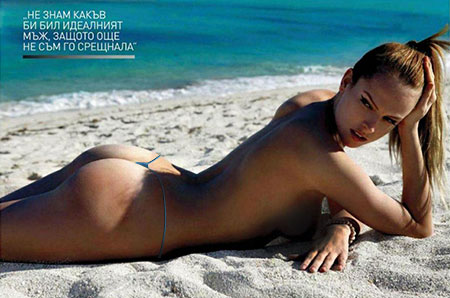 STC: Your lighting method is little different from Playboy photographers here is the US. We are looking forward to learning from you at our next seminar/workshop, which will be held in Miami in Oct 13-14, 2012. What are your expectations from this next upcoming seminar?
STC: Your lighting method is little different from Playboy photographers here is the US. We are looking forward to learning from you at our next seminar/workshop, which will be held in Miami in Oct 13-14, 2012. What are your expectations from this next upcoming seminar?
I think it is going to be a blast! I will not reveal any more at this point, but you are invited to come to Miami in October and experience it for yourself!
STC: Again, congratulations on your success and we look forward to seeing you at the next Oct 13-14, 2012 STC seminar/workshop.




















